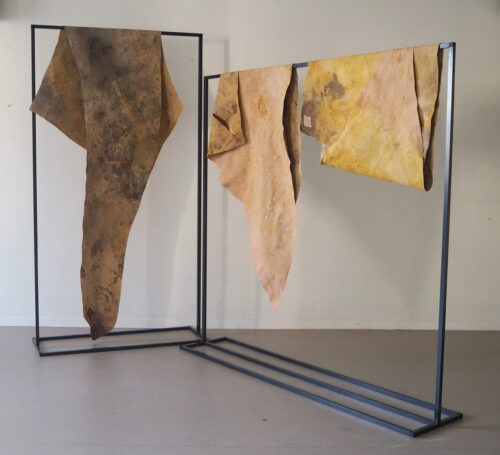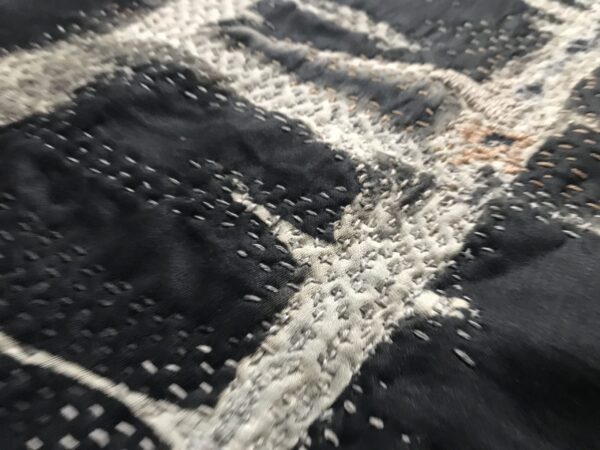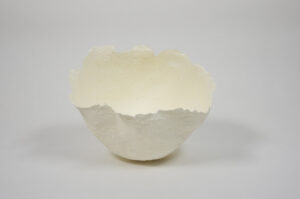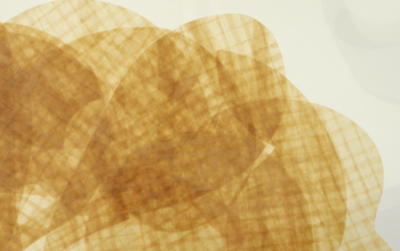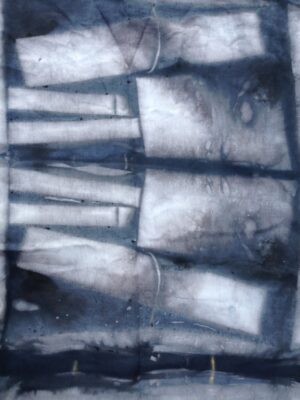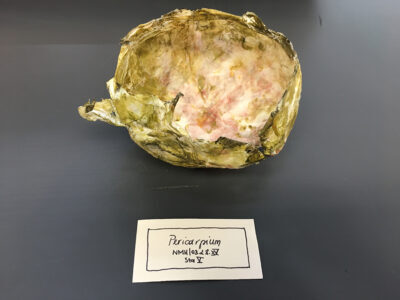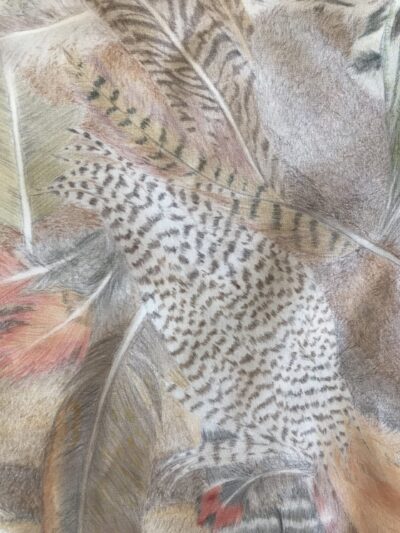6 objects made of dyed cotton, silk, bookbinding linen, roller blind fabric, iron-on fleece | 2015
In Japanese culture, it is assumed that fabric has a spirit of its own and that this enters into an interrelationship with the human body. This takes place primarily in the space between the body and clothing. The spirit of the fabric leads to an adaptation of the garment to the way of life of the wearer. This view is clearly reflected in Japanese clothing construction. Here, narrow panels of fabric are cut into rectangular pieces and then sewn together to form a garment. Cutting away from the body creates an interesting phenomenon that is rarely considered or appreciated in the European tradition: the space between the body and the clothing, for which there is a separate word in Japanese: ma*.
On this basis, I developed six garments that consist only of basic forms and are flat when unworn. It is only in combination with the body that they unfold their three-dimensionality: sculptures on the body are created.
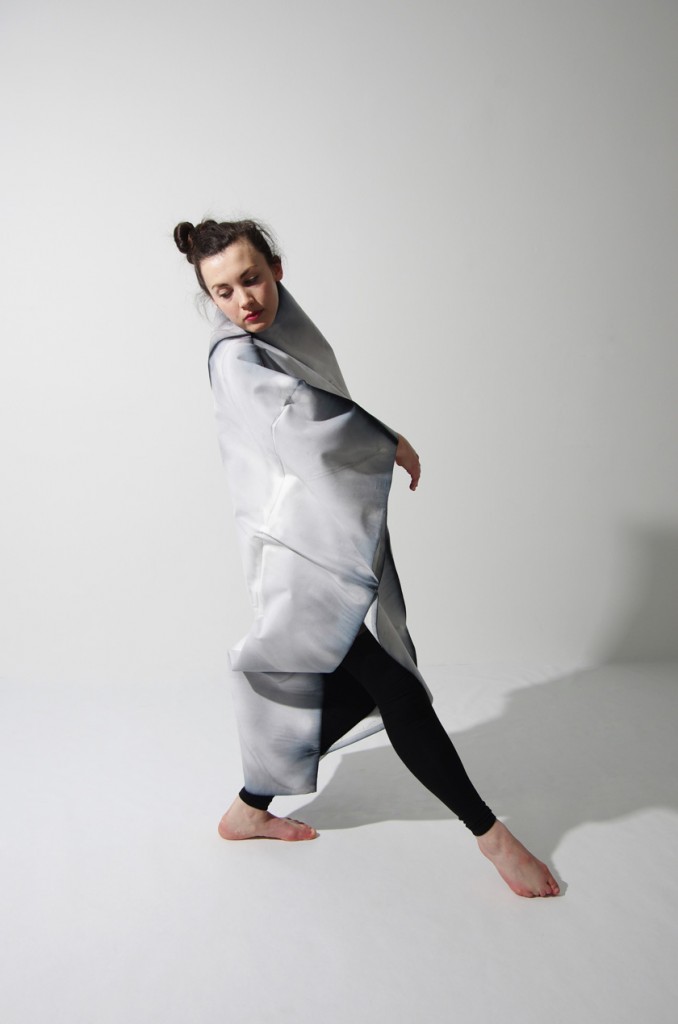
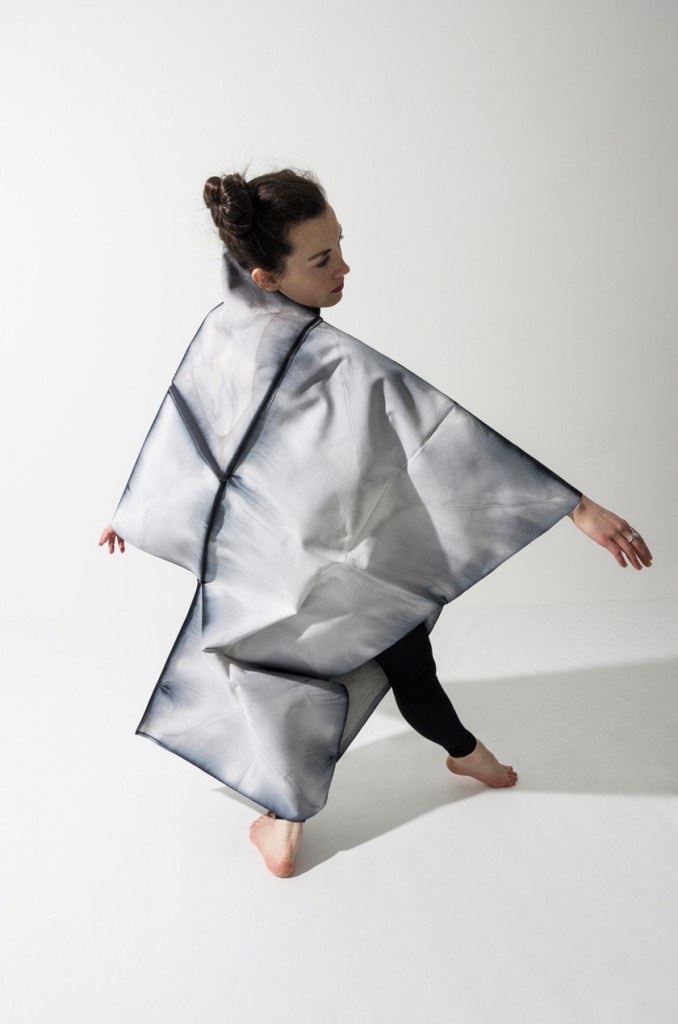
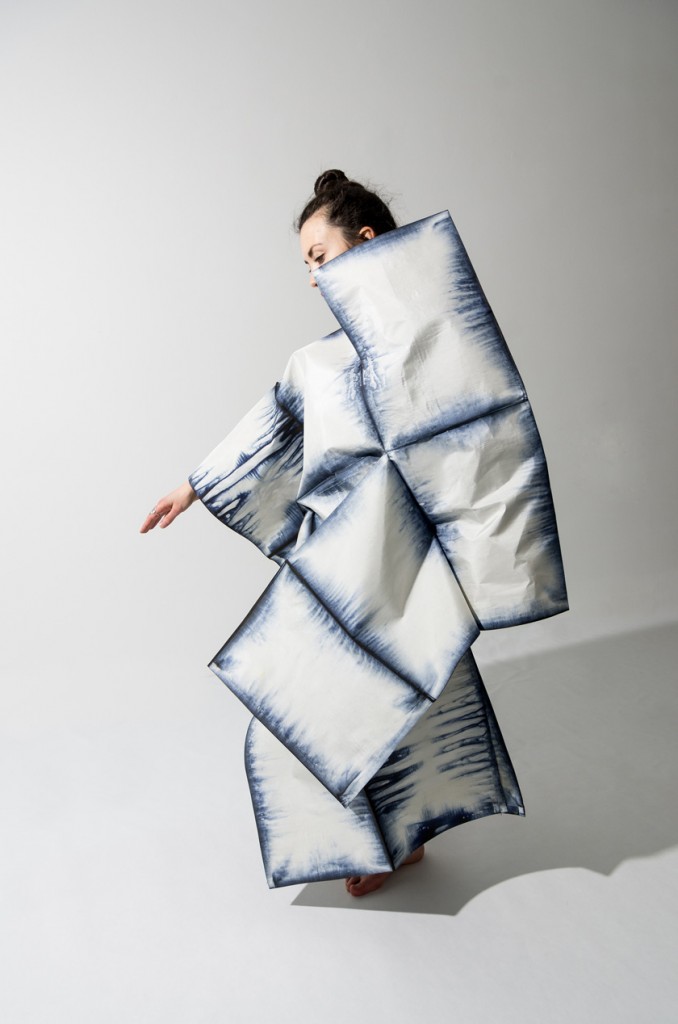
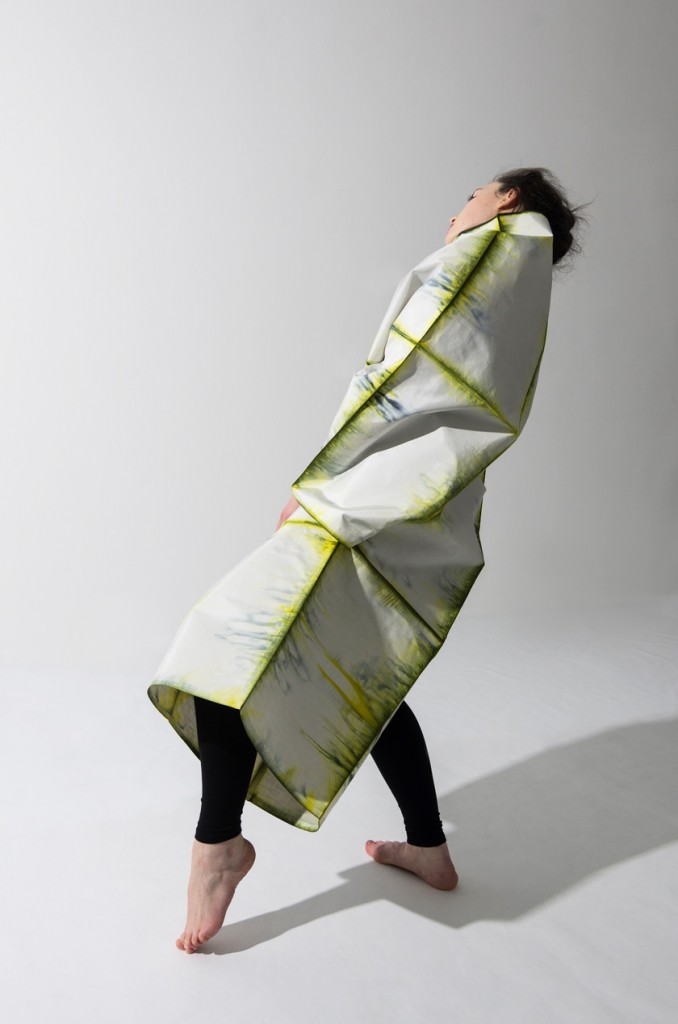

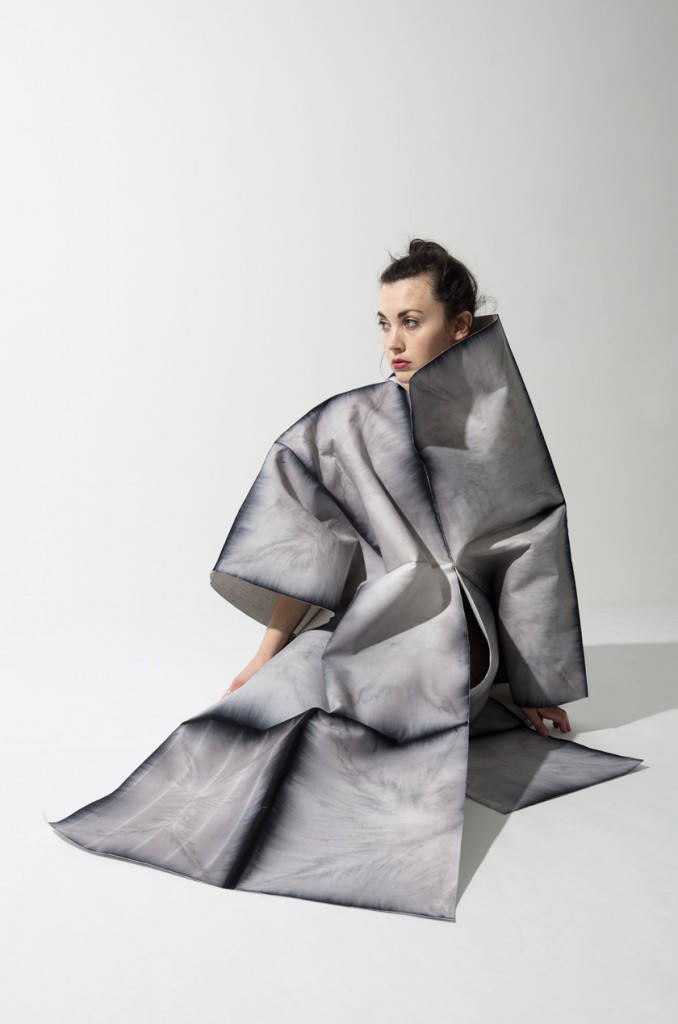
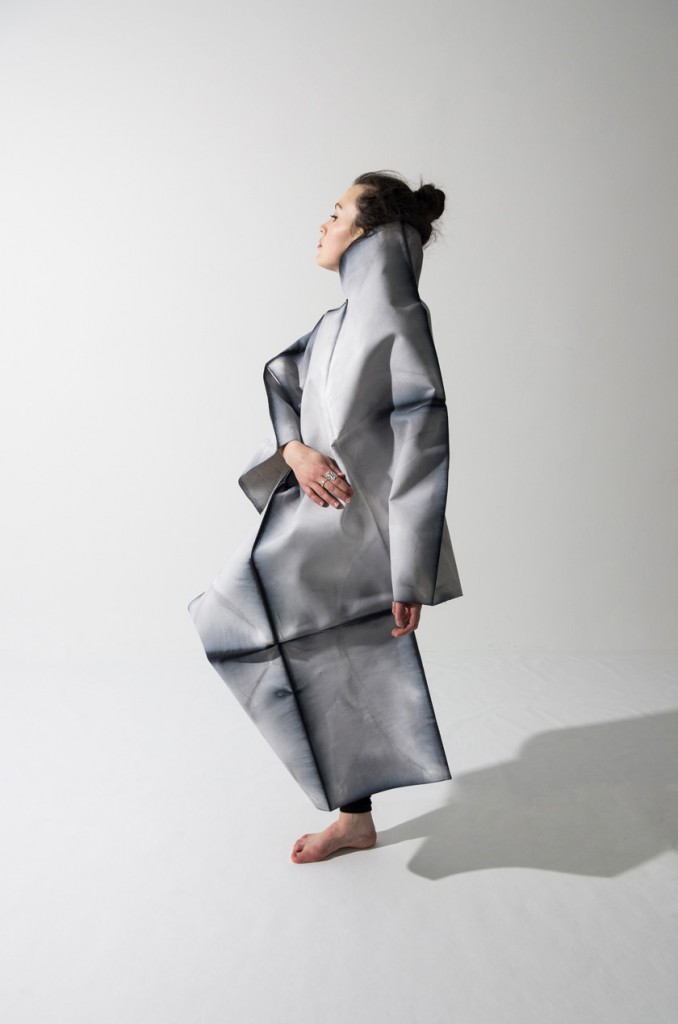
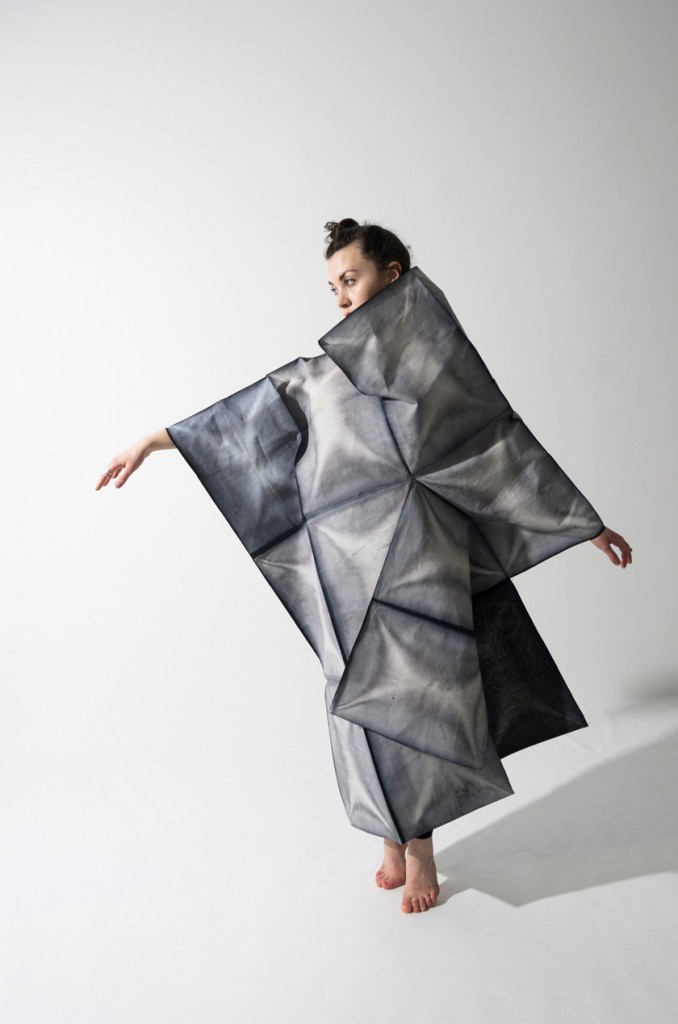
*Quellen:
Wada Y. (1995). Textilien und Kimonos. In K. Hiesinger & F. Fischer (Hrsg). Japanisches Design seit 1950. Berlin: Ernst Wasmuth Verlag.
Funkai, A., Vinken, B., Frankel, S. & Kurino, H. (2011). In C. Ince & R. Nii (Hrsg.), Future Beauty. 30 Jahre Mode aus Japan. München: Prestel Verlag.
